

With 58% of consumers willing to sever a relationship with a business due to poor customer support, a thorough customer service strategy is key to your company’s success. And with such high stakes, simply answering the support line or replying to customer emails isn’t enough to stand out from the competition.
A recent Gartner survey showed that “proactive customer service results in a full point increase” in key customer success metrics such as Net Promoter Score, Customer Satisfaction Score, Customer Effort Score, and Value Enhancement Score.
By creating a customer service strategy that is proactive, you can strengthen customer loyalty and enhance customer experience before your customers ever need support.
What Is Proactive Customer Support?
Proactive customer support is the strategy of addressing customers’ needs, challenges, and concerns before they occur. This act of going above and beyond shows customers and potential customers you’re invested in their success, as well as helps you reduce the number of inbound issues and support tickets.
Reactive vs. Proactive Customer Service
Customer service is classified into two different categories: reactive and proactive. You can typically identify the type of customer service by when contact is initiated.
For example, a customer reaches out with a question regarding how to set a new password. They wait on a service representative, and eventually, they connect and solve the customer’s challenge. This is reactive customer service because the customer made first contact.
Now, say you anticipated customers might have questions regarding account setup. You create a knowledge base with support documentation and share it with the customer as soon as they start working with you. This is proactive because you solved a customer’s challenge before even knowing they had it.
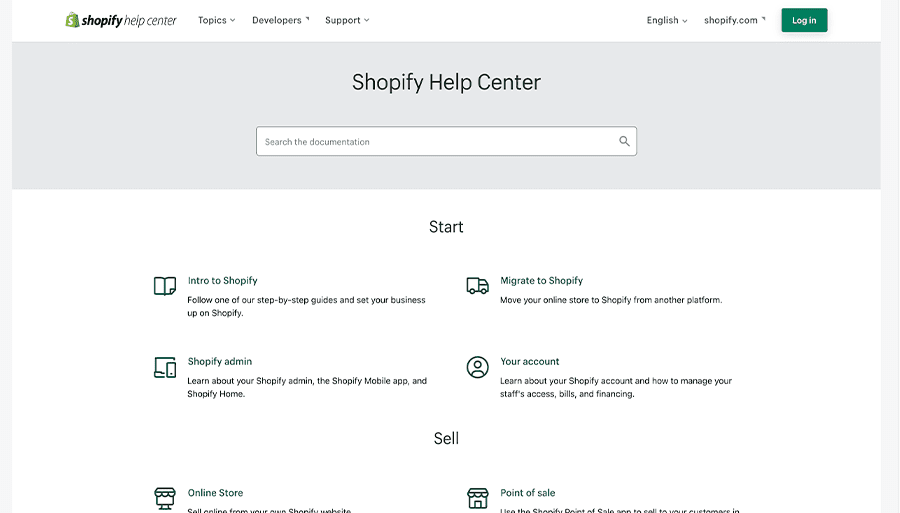
Shopify has a great help center that provides users with a self-help knowledge base portal to find answers to common questions and to become more advanced Shopify users.
Benefits of Proactive Customer Service
Using a proactive customer service model prioritizes and streamlines customer experience (UX), promotes customer loyalty and retention, reduces the burden on your support team, and provides an overall great customer service experience. Let’s explore these benefits in-depth:
1. Improves Your Customer Experience
A recent customer experience report revealed that 83% of consumers had experienced customer experience challenges such as having to repeat themselves, difficulty using self-service, and trouble accessing an agent. These issues can cause an already confused customer to become increasingly frustrated with a product. Proactively addressing customer concerns means customers will spend less time dissatisfied with the product and more time seeing its value.
According to customer experience statistics, creating a proactive customer service strategy tends to be the overwhelmingly preferred support model from the customer perspective. 90% of consumers expect companies to offer a self-service customer portal, and 67% of them prefer using an online self-support system than speaking to an agent.
2. Drives Customer Retention & Loyalty
Proactive customer support reduces any friction prohibiting customers from seeing the value of your product or service. This is key to driving user retention. Customers don’t want to contact support and wait for answers. As mentioned above, Microsoft’s Global State of Customer Service report found that 86% of respondents expect a self-service option and two-thirds will try self-service before contacting a support person.
3. Reduces Support Calls & Tickets
In the previously mentioned report, 68% of the businesses surveyed agreed that their customer service team struggles to manage their support tickets and inquiries. A great ticket deflection strategy is to invest in proactive customer service. With fewer common issues, support teams have freed up time to work on more complex customer problems.
How to Provide Proactive Customer Support
Proactive customer service and omnichannel customer experiences are the new standards for supporting customers and a great way to distinguish your product from the competition. Here are five essential tips for effectively providing proactive customer service.
1. Use Customer Feedback to Find Common Support Issues
The easiest way to find out what customers want is to ask them. Customer feedback is a great way to understand user challenges and find areas to improve before the customer is frustrated enough to churn.
Effective ways to gather user feedback include:
- Creating a customer survey using tools such as Google Forms or SurveyMonkey and sharing it with customers. Increase participation by including the link in an email, sharing it on social media, and notifying users in your application.
- Going through past support tickets and finding frequently occurring queries or phrases.
- Analyzing user behavior to see where customers are hitting barriers. For example, Whatfix’s analytics tools show user drop-off spots, indicating where users may need extra help navigating your product or service.
- Monitoring social media channels. Check for comments on posts, mentions of your company, and reviews left on your page.
2. Create a Knowledge Base
A knowledge base is a digital pool of resources where users can find information about your company and product. It’s a great form of proactive customer service because you’re compiling the resources customers need before they need them.
For example, the Whatfix knowledge base includes sections on getting started, FAQs, release notes, tutorials, integrations, and much more – as you can see below:
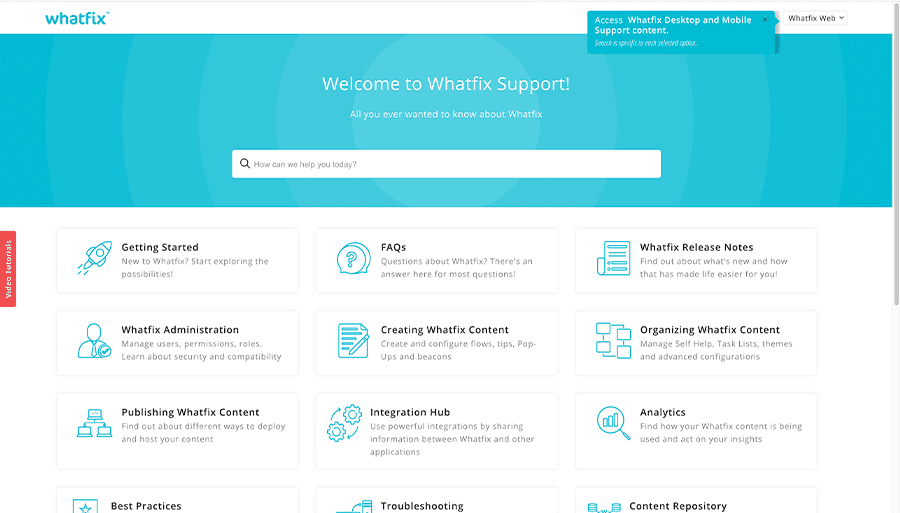
Typical knowledge bases include:
- Company FAQs
- How-to videos or documents
- Troubleshooting resources
- Product walkthroughs
- Webinars and other continued-learning materials
- Account information
TIP: A few of the best knowledge base solutions include vendors such as Zendesk, Guru, and Helpjuice. Compare and explore all the best knowledge base software in our 2022 buyer guide now!
3. Invest in On-Demand Support Tools
There are many on-demand support tools that empower your users with access to helpful resources at the moment of need, where they need them. For example, companies will often implement a self-service option, such as a chatbot or knowledge base, so that users can get immediate answers 24/7.
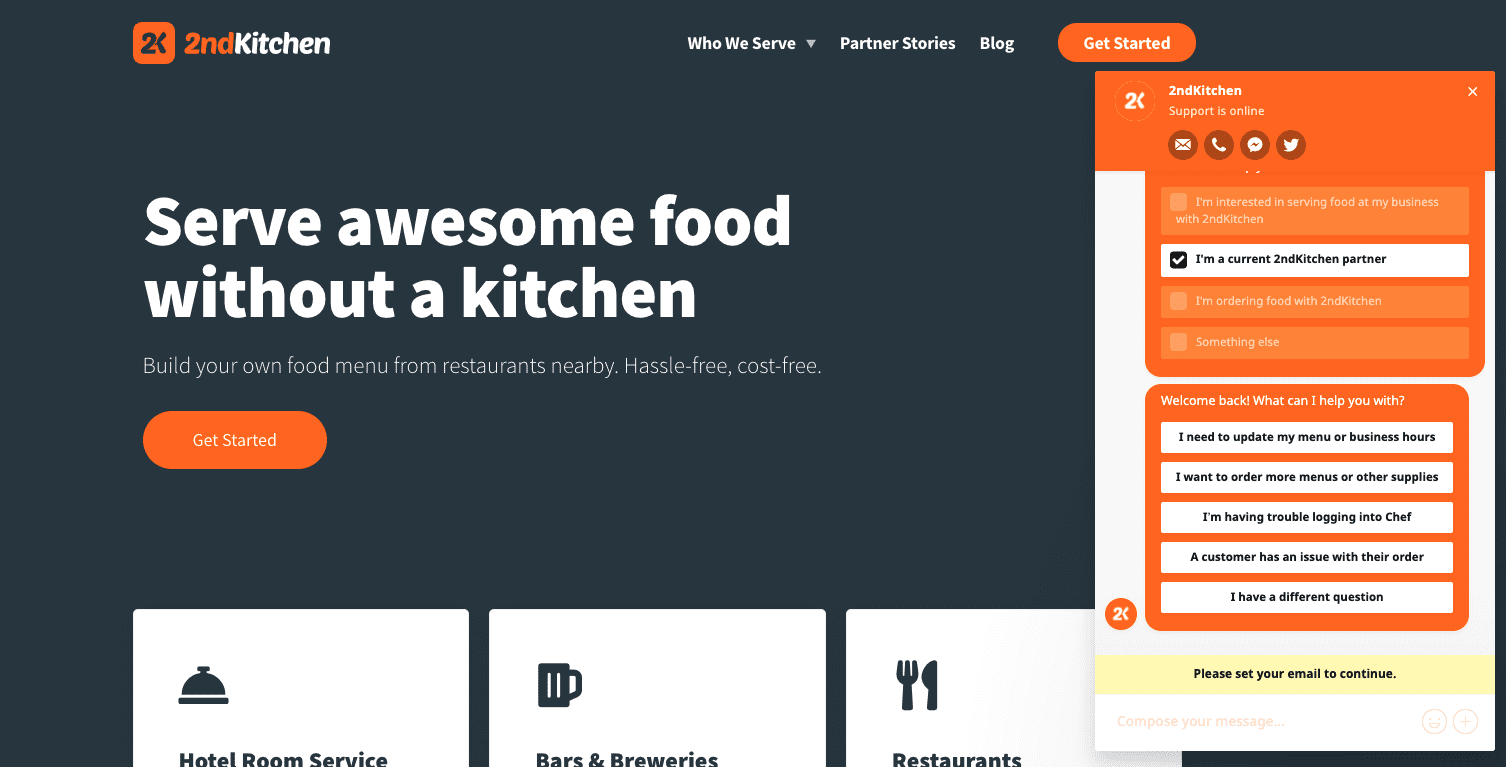
Above is an example from 2ndKitchen of using live chat to proactively help customers find answers to their problems using an automated live chat sequence.
Another option to support your customers is a digital adoption platform. A digital adoption platform allows organizations to create interactive, in-app content that guides customers with product tours, process tutorials, tooltips, and hotspots, as well as embedded FAQ widgets.
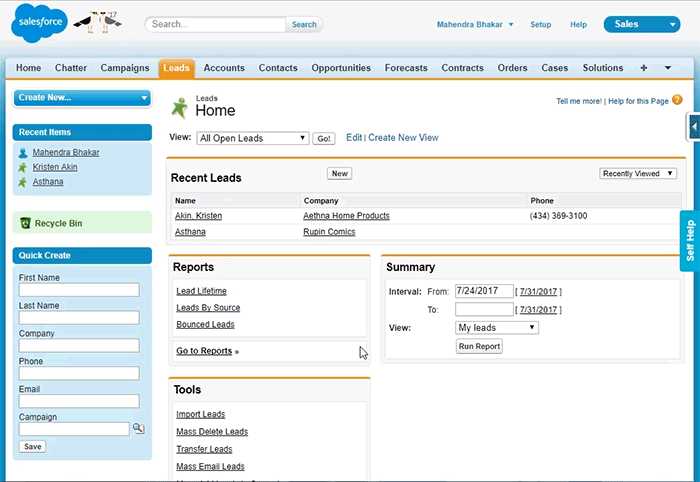
You can create guided walkthroughs and in-app self-help wikis using Whatfix’s digital adoption platform.
A few examples of how to use a digital adoption platform to provide on-demand, proactive customer support include:
- Flows or walkthroughs, that are initiated when a user is confused about a process. Once initiated, an interactive walkthrough will show the user how to complete an action step-by-step.
- A self-help widget that is a hybrid of a chatbot and knowledge base, but integrates with your learning management software (LMS) or knowledge base to find contextual information for the user based on where they are in-app.
- Intelligent nudges to prompt users to complete tasks and highlight new or underutilized features.
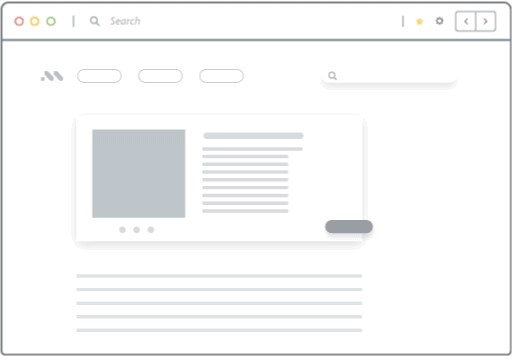
4. Re-Train Your Employees to Be Proactive
Customer service teams are often focused on responding to customer queries as they happen. But with customer service training, you can train people to think ahead and avoid those queries from ever happening.
One way to do this is to set up an internal knowledge base with all the information employees need about your product. You can also use this space to inform them of updates to share with customers. Additionally, training employees to reach out to customers with updates or simply to check in can make all the difference in how your customers feel about your brand. In fact, the aforementioned Microsoft report found “more than two-thirds of customers want an organization to reach out and engage with proactive customer notifications.”
5. Understand Your Customers’ Pain Points
User journey mapping, the process of visualizing the paths users take to complete specific actions within a product, is a great way to spot UX inefficiencies. This research method involves thinking like your customer to discover their behaviors, patterns, and roadblocks within your product. When you understand users’ pain points, you can proactively make adjustments before customer issues occur.
5 Examples of Great Proactive Customer Service
While many companies have adopted some level of proactive support, here are a few of the best examples of killer proactive customer service strategies to use as inspiration when modeling your approach:
1. Sprint uses predictive analytics to identify at-risk customers
Sprint (now part of T-Mobile) uses predictive analytics, an AI-powered method of anticipating user behavior and trends, to predict when customers are at risk of churning. Its algorithm identifies these customers and automatically provides them with personalized retention offers. By proactively identifying unsatisfied customers and offering a solution, they have seen an 8x increase in early customer upgrades.
2. LG invests in AI-powered customer support
Leading home entertainment and appliances company LG also uses an AI customer support solution within its home appliances called Proactive Customer Care.

The program notifies users of potential problems before they occur, expedites repairs when needed, sends regular maintenance reminders, and shares advice about keeping appliances up to date. If users do experience a problem, the program immediately shares step-by-step instructions so the user can fix it without a service call.
3. Facebook's knowledge base
Facebook has done an incredible job of creating a comprehensive knowledge base that is optimized for users to search and find answers to support issues. Almost every question users could have about their individual accounts, business accounts, and ads manager can be answered within this support portal.
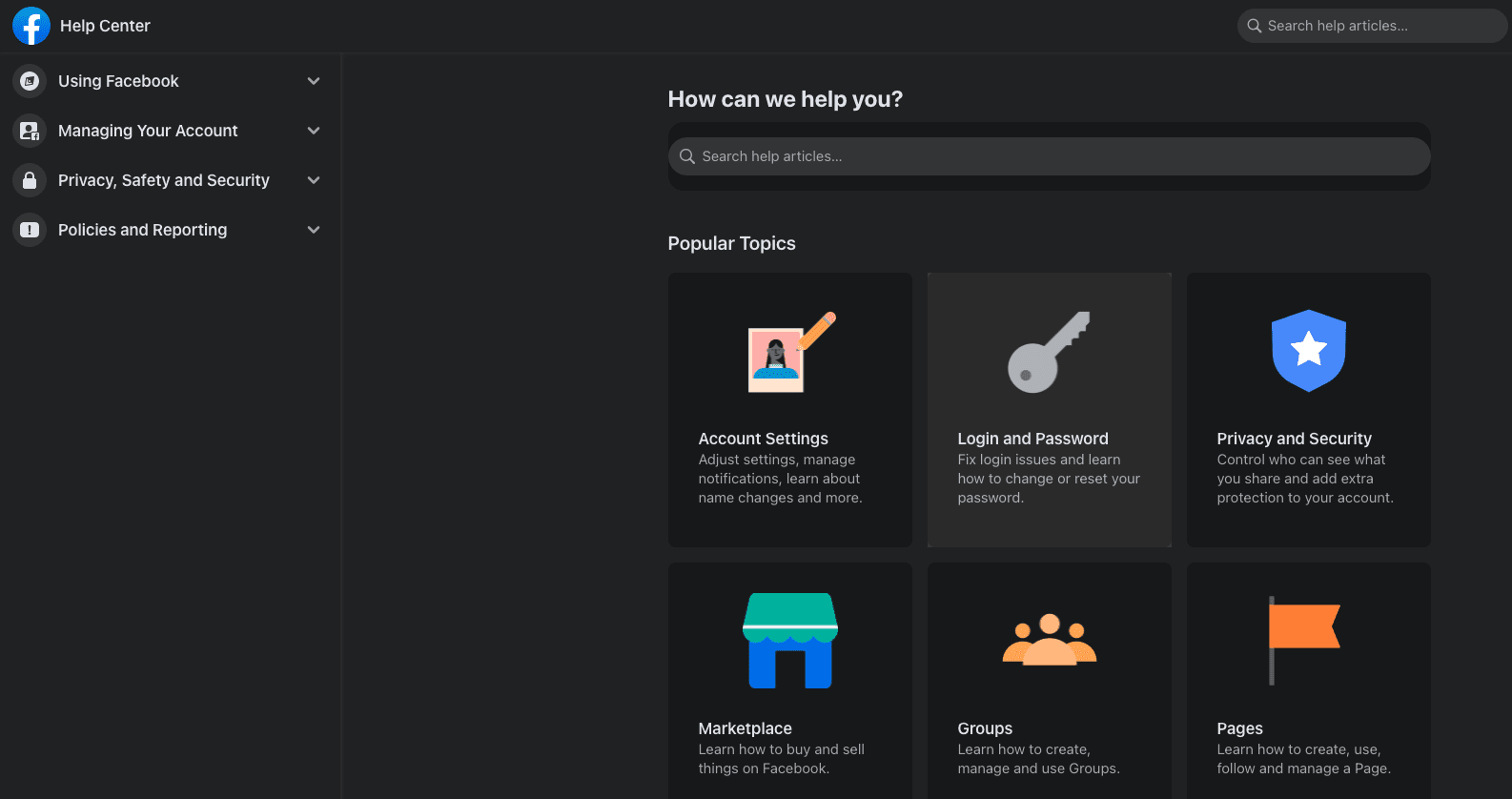
4. HubSpot
Marketing automation software company HubSpot employs a chatbot called HubBot. This widget auto-populates questions customers may have based on the page they are viewing. This makes it easier for users to find context-specific support resources. The chatbot below represents what users would see when they landed on HubSpot’s sales page, for instance.
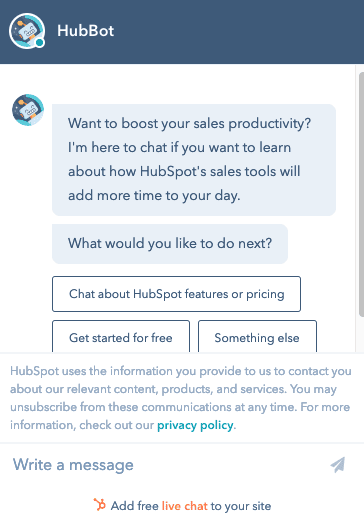
5. Maxwell Health
HR and benefits platform Maxwell Health uses Whatfix to create in-app guided walkthroughs, product tours, and self-help content. These help customers learn about updates to the software in real-time without contacting the support line. The integration with Whatfix has saved them 25,000+ support queries.
A proactive customer support strategy is important now more than ever because customers themselves are no longer passive. They’re proactive in looking for solutions — and in looking for reasons to trade up to a better product or service. Proactive customer service gives you a competitive advantage in an increasingly turbulent market. The key to proactive customer service is staying ahead of the challenges and concerns your customers most often have. This builds trust and ultimately leads to happy customers.
See how Whatfix provides contextual, proactive customer service with on-demand, in-app performance support.


